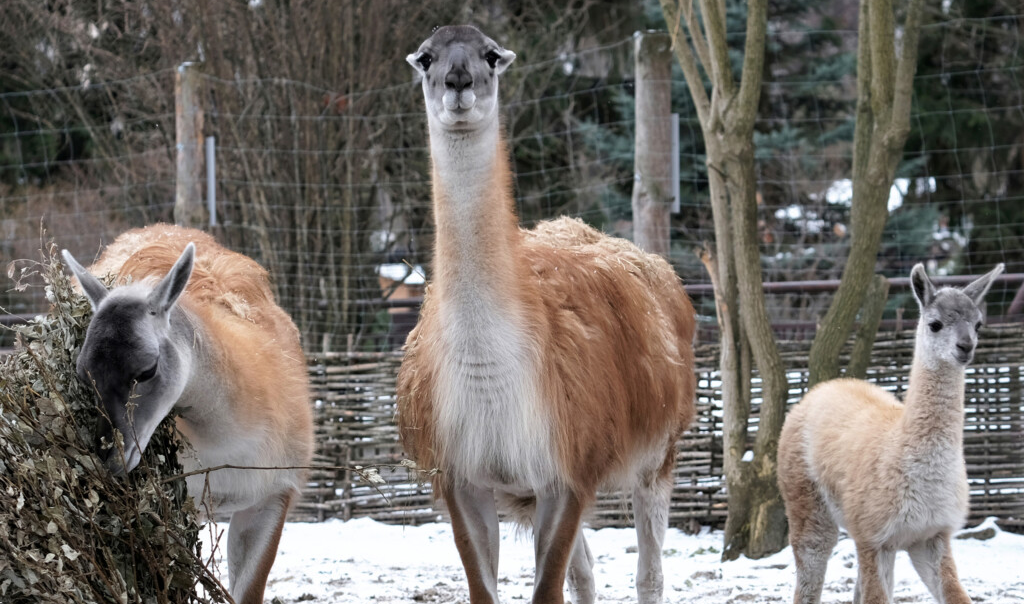A cub was born to a “loving” pair of exotic animals in the Kyiv Zoo (photo)
14 February 17:01
In the Kyiv Zoo, a pair of guanacos gave birth to a fluffy baby named Sancho. This was reported by "Komersant Ukrainian" with reference to the zoo’s press service.
“We have good news from our guanacos Raquel and Ricardo, a couple in love – a wonderful fluffy baby was born. It is a funny boy named Sancho. The baby eats exclusively his mother’s milk and is rapidly gaining weight. So, out of his initial 8 kg, he has already gained 5 kilograms in 3 weeks,” the zoo informs.

The animal is actively interested in the world around it and even tried green twigs, imitating its parents.

Who are guanacos and what is known about them
The guanaco (Lama guanicoe) is a wild cloven-hoofed animal from the camel family, related to llamas, alpacas and vicuñas. They live in South America, mainly in Argentina, Chile, Bolivia, Peru, and Paraguay, preferring arid and mountainous areas, including Patagonia and the Andean highlands.

Main characteristics
Size: Guanacos reach 1.2 meters in height at the withers and up to 1.8 meters in total height, weighing between 90 and 140 kg.
Color: They usually have a thick, light brown coat with white areas on the belly and muzzle.
Adaptation: Perfectly adapted to living at altitudes up to 4,000 meters above sea level, they can do without water, getting moisture from plants.

Lifestyle and behavior
Social structure: They live in groups of 5-10 individuals, consisting of a male, several females and their cubs. Young males form separate “bachelor” groups.
Reproduction: Pregnancy lasts about 11 months, and one cub is born, which is able to walk after a few hours.
Diet: Guanacos are herbivores, feeding on grasses, shrubs and lichens.

Importance for the ecosystem and humans
They are an important herbivore in their ecosystem and help spread plant seeds. Their ancestors were domesticated and gave rise to llamas, which are used as pack animals. In the past, guanacos were heavily hunted for their fur, but now their numbers are relatively stable, although in some areas their population is declining due to human activity. Guanacos play an important role in South American ecosystems and remain one of the most characteristic inhabitants of the Andes.

Читайте нас у Telegram: головні новини коротко









